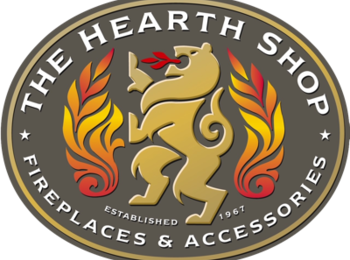What are the key elements in designing and maintaining a safe fireplace system?
Functionality is always considered first. The other design elements in the room also influence the look and feel of the fireplace system and its accessories. Additionally, when designing the system it must be determined if the fireplace system will be burning wood or using gas logs and the size of the fireplace opening. If it is wood burning, you will want easy access for building and stoking the fire. If it is gas, it won't necessarily need mesh, although viewing gas logs through a decorative screen always adds to the ambience.
What is the purpose of having glass doors on my fireplace, rather than a screen or mesh curtain?
The purpose of having a glass door is for heat loss. It is like closing a window when you are not using the fireplace. To operate a glass door when you build a wood fire, leave the doors open so you can feel more heat, using a backup screen for sparks. When it is a low fire or when you go to bed at night, close the doors to keep the heat in the house. When not using the fireplace, always close the doors. Many clients prefer to have glass doors if they are using gas logs since they cannot close the flue for safety reasons. In fact, the state of California requires glass doors, as well as outside air for combustion, in all new construction. The outside air allows the fireplace to draw from outside the house for combustion rather than taking room air.
When installing my mantel, what is the typical and safest distance between the mantelpiece and fireplace?
When installing a mantel, the most common measurement is to place it 12" above the top of the fireplace system, and for every additional inch that the shelf protrudes out, add an additional inch. For example, a 6" mantel would be 18" above the opening.
How often should I clean out my fireplace and have my chimney swept?
If you burn wood, it is recommended to have your chimney and fireplace system checked once a year. You can tell if it is time for cleaning by looking up inside the throat of the fireplace. If there is more than 1/4 inch of soot, it needs to be cleaned. If it is shiny, you have glazed creosote and should schedule a cleaning immediately, as it could cause a flue fire.
Is it safe to burn paper and trash in my fireplace?
It is recommended to use a couple of pieces of paper to start your fire, but never burn trash. It burns too hot and could damage your flue.
What is the safest method of spark protection?
In California, you need 5/8” mesh on top of the chimney flue. Inside the house, the best protection is a flat wire mesh screen.
Are there benefits to utilizing gas logs rather than wood?
Gas logs are more convenient and serve as a constant source of heat; they are also not as messy as wood logs.
What is the safest type of wood to burn?
A good, solid wood like oak or madrone is the safest type of wood to burn. It burns longer and does not tend to “pop.”
What is the industry standard for the depth and width of a fireplace to ensure a safe and effective system?
It's all about the relationship between the size of the fireplace opening, the size, and the height of the flue. The ratio is the flue diameter needs to be 10% of the opening.
Are wood-burning stoves safer than the typical fireplace system?
Wood stoves can be locked closed and are typically an airtight system, allowing for controlled combustion.
What is the best way to avoid a chimney fire?
Have your chimney cleaned and check it periodically during the burning season. If creosote or soot has accumulated, it needs to be cleaned. Cleaning once a year at minimum is the recommended industry standard.
What is the best way to build a fire in my fireplace?
The best way to build a successful fire is to roll up three balls of newspaper and put them under the grate with any kind of kindling. Light it and wait approximately three minutes, then place larger pieces of wood on top.
What are the reasons a fireplace may smoke?
A fireplace may smoke for the following reasons:
• The fireplace opening is too large in relation to the width and height of the flue/chimney.
• Your chimney may be obstructed or clogged, in which case it needs a professional sweeping; if there is more than 1/4” of soot in the flue, that’s a sign it’s time for a cleaning.
• The spark arrestor may be clogged (most commonly occurs in wood stoves).
• If you have trees growing around your flue, it could change the air current. Trimming these trees may alleviate the smoking.
• If the smoking is only occasional, it could be what is called a “downdraft,” which comes straight down the chimney; in many instances a “cap” may fix this problem.
• Your fire may be built too far forward in the opening of the fireplace.
